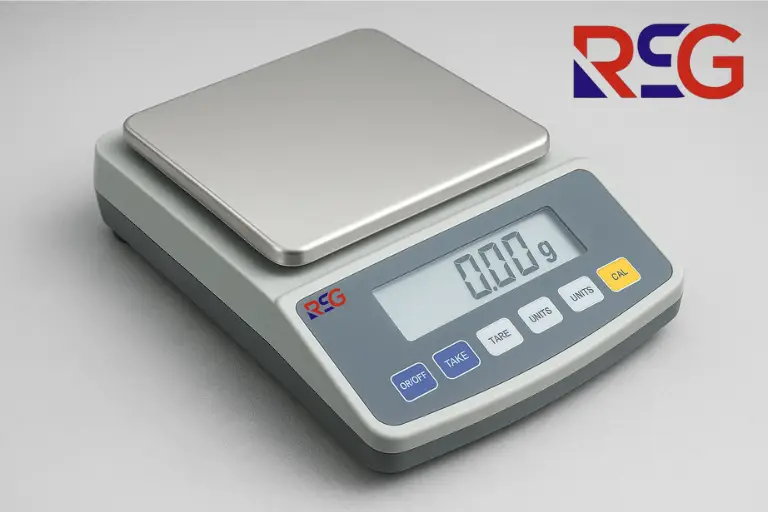
What Is a Precision Scale? Understanding Accuracy, Sensitivity, and Readability
In today’s world of high-accuracy measurements, whether in laboratories, manufacturing, pharmaceuticals, or jewellery, precision scales are indispensable. They offer exact readings where even the slightest deviation can impact product quality, compliance, or research results.
But what exactly is a precision scale, and how is it different from regular weighing equipment? More importantly, what do terms like accuracy, sensitivity, and readability really mean in the context of precision weighing?
In this article, we’ll demystify these core concepts and help you understand how to choose and use a precision scale for optimal results.
What Is a Precision Scale?
A precision scale also known as a top-loading balance is a type of digital weighing scale designed to measure small weight changes with high accuracy and repeatability, often up to 0.01 grams or better. While not as sensitive as analytical balances (which measure down to 0.0001 g), precision scales are widely used for tasks that require exact and repeatable results, but in less sensitive environments.
Common Use Cases:
- Laboratory measurements
- Pharmaceutical compounding
- Industrial quality control
- Jewellery and precious metals weighing
- Food ingredient formulation
- Educational settings
Key Concepts: Accuracy, Sensitivity & Readability
These three terms are crucial when evaluating a precision scale. Though they’re often used interchangeably, they refer to different performance characteristics:
Accuracy: Getting the True Value
Accuracy is the degree to which the measurement on the scale reflects the true weight of the object. A highly accurate scale will consistently return a result very close to the object’s actual mass.
Example:
If a certified 100g standard is placed on a precision scale and it reads 100.01g, the accuracy is off by +0.01g. A more accurate scale would minimize this difference.
Why It Matters:
In quality-sensitive environments like pharmaceuticals or research labs, even tiny inaccuracies can compromise results or regulatory compliance.
Sensitivity: Detecting Small Changes
Sensitivity is the scale’s ability to detect small changes in weight, such as adding or removing a tiny amount of a substance.
Example:
If you add 0.01g of powder to a container already on the scale, and the display updates to show the increase, the scale is sensitive enough for that level of detail.
Why It Matters:
Greater sensitivity means better control, especially when measuring volatile, lightweight, or high-value substances.
Readability: Display Resolution
Readability refers to the smallest division of mass that the scale can display also known as graduation. It’s often confused with accuracy but refers only to the resolution of the display.
Common Readability Options:
- 1g (general-purpose scales)
- 1g (kitchen/retail scales)
- 01g or 0.001g (precision scales)
- 0001g (analytical balances)
Why It Matters:
Higher readability doesn’t always mean better accuracy but it helps with detecting fine variations when needed.
How Do Precision Scales Work?
Precision scales use a load cell, typically a strain gauge or electromagnetic force restoration system, to measure the force exerted by the object’s mass. That force is converted into an electrical signal, which is processed and displayed as weight.
Most modern precision scales come with:
- Digital displays
- Tare function (subtract container weight)
- Calibration modes (internal or external)
- Units conversion (grams, carats, ounces, etc.)
Choosing the Right Precision Scale
When selecting a precision scale, consider the following:
- Required Accuracy Match it to your application’s tolerance level.
- Capacity Ensure the scale can handle the weight range of your materials.
- Readability Choose based on the smallest change you need to detect.
- Calibration Options External calibration is more flexible, internal is more convenient.
- Environmental Suitability Choose a model that withstands dust, humidity, or vibration if needed.
- Compliance for legal trade or regulated industries, make sure the scale is certified.
- Maintaining Accuracy over Time
To maintain performance:
- Calibrate regularly with certified weights.
- Keep it level using the built-in spirit bubble.
- Avoid vibration, drafts, and direct sunlight near the scale.
- Use a stable surface and avoid weighing near heavy machinery.
Also, never exceed the scale’s maximum capacity it can damage the load cell and compromise all future readings.
A precision scale is a critical investment for anyone requiring reliable, consistent, and accurate weight measurements. Understanding the technical terms accuracy, sensitivity, and readability ensures you select the right scale for your needs and use it to its fullest potential.
By combining the right equipment with proper care and calibration, you’ll not only extend the life of your scale but also ensure every gram counts, literally.